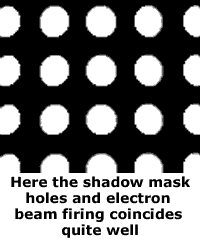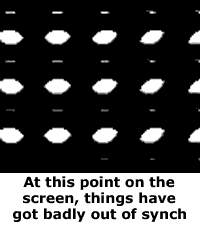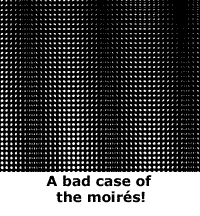The word “moiré” comes from the French word for mohair and is defined as “having a watered or wavelike pattern” (Collins English Dictionary).
Moiré patterns can occur whenever similar, regular patterns are superimposed on each other and are offset or angled with respect to one another. They are commonly seen amongst the folds of net curtains and, more relevantly to Display Monitor readers, in CRT displays.
Strangely, moiré patterns, which many monitor manufacturers go to great lengths to minimise, are a sign of a CRT with good electron-beam focus characteristics. They are caused when the beam’s firing is slightly out of synchronisation with the holes in the shadow-mask or aperture grille. As the two slip further out of synchronisation, less of the phosphor dot which is being targeted is illuminated as more of the beam lands on the metal of the mask/grille. Eventually, the beam will spill over into the next (or previous) hole/slot until it once again synchronises with the pitch of the mask/grille. The result is that the brightness of the image repeatedly falls and then rises, producing the wave-like pattern. The effect can occur in both horizontal and vertical synchronisation, causing the waves to appear as if they are bending and can produce an effect that looks not unlike a fingerprint.
CRTs in which the beam is badly focused are less liable to moiré patterning because the unfocused beam will be wider than the hole or slot through which it is attempting to pass and will, therefore, still manage to hit the target phosphor dot, even if its aim is off-centre. To use a crude analogy, it’s like two people trying to hit a target by firing a gun through a small hole: a person using a shotgun (unfocused beam) is more likely to hit the target than one using a rifle (focused beam).
To minimise moiré patterning, a slight “wobble”, or phase-shift, in the beam can be introduced between scans so that the beam is slightly deflected from the “ideal” path each time. The moiré pattern will still exist but the lighter and darker regions will be shifted slightly each time, reducing their visibility.



